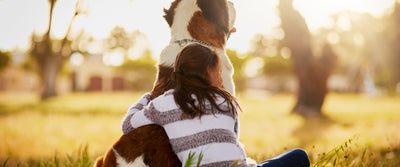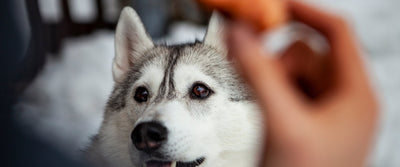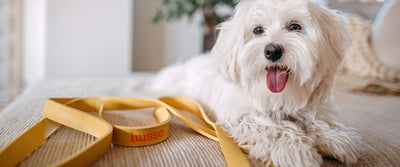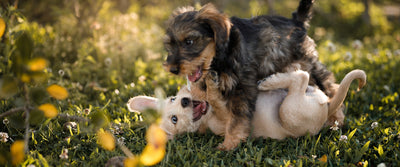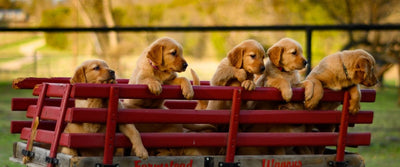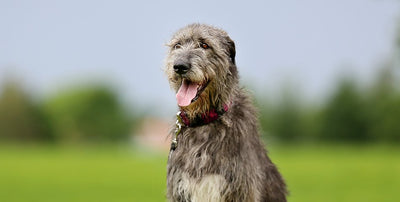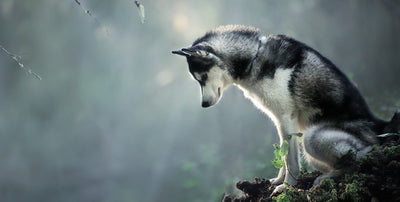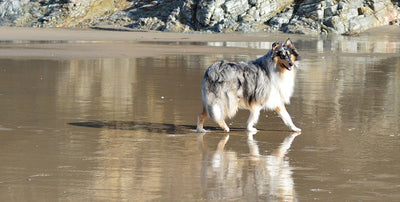Muscular dog widely recognised as an aggressive breed
Rottweiler is a breed of big, muscular working dogs. It’s a great breed for guard dogs, as they are naturally aggressive toward strangers.
 Country of origin: Country of origin: |
Germany |
 FCI group: FCI group: |
Group 2, Section 2.1 Mollosian, Mastiff |
 Temperament: Temperament: |
Obedient, stubborn, careful, confident, brave, loyal |
 Colors: Colors: |
Black, brown, mahogany |
 Weight: Weight: |
Female: 35–48 kg, Male: 50–60 kg |
 Height: Height: |
Female: 56–63 cm, Male: 61–69 cm |
 Life expectancy: Life expectancy: |
from 8 to 10 years |
Rottweiler puppies
Rottweilers are very confident and stubborn dogs, that’s why puppies of this breed require consistent training. This dog breed can try to dominate the owner, so from the very beginning, you have to establish a relationship based on trust and respect. You have to be firm but not sharp - Rottweilers are naturally an aggressive dog breed that can get out of hand if the owner doesn’t know how to treat them. Rottweiler puppies are good at focusing, so they can pick up skills and tricks rather quickly. Always reward good behaviour or correctly executed commands and never skip socialisation. Rottweiler puppies grow very fast, so they need a diet that will support their growth and development. The formula for puppies of big dog breeds Valp Maxi is enriched with glucosamine and chondroitin that will support the health of your dog’s joints. It a balanced diet of high palatability and with kibble size suitable for bigger and stronger jaws.
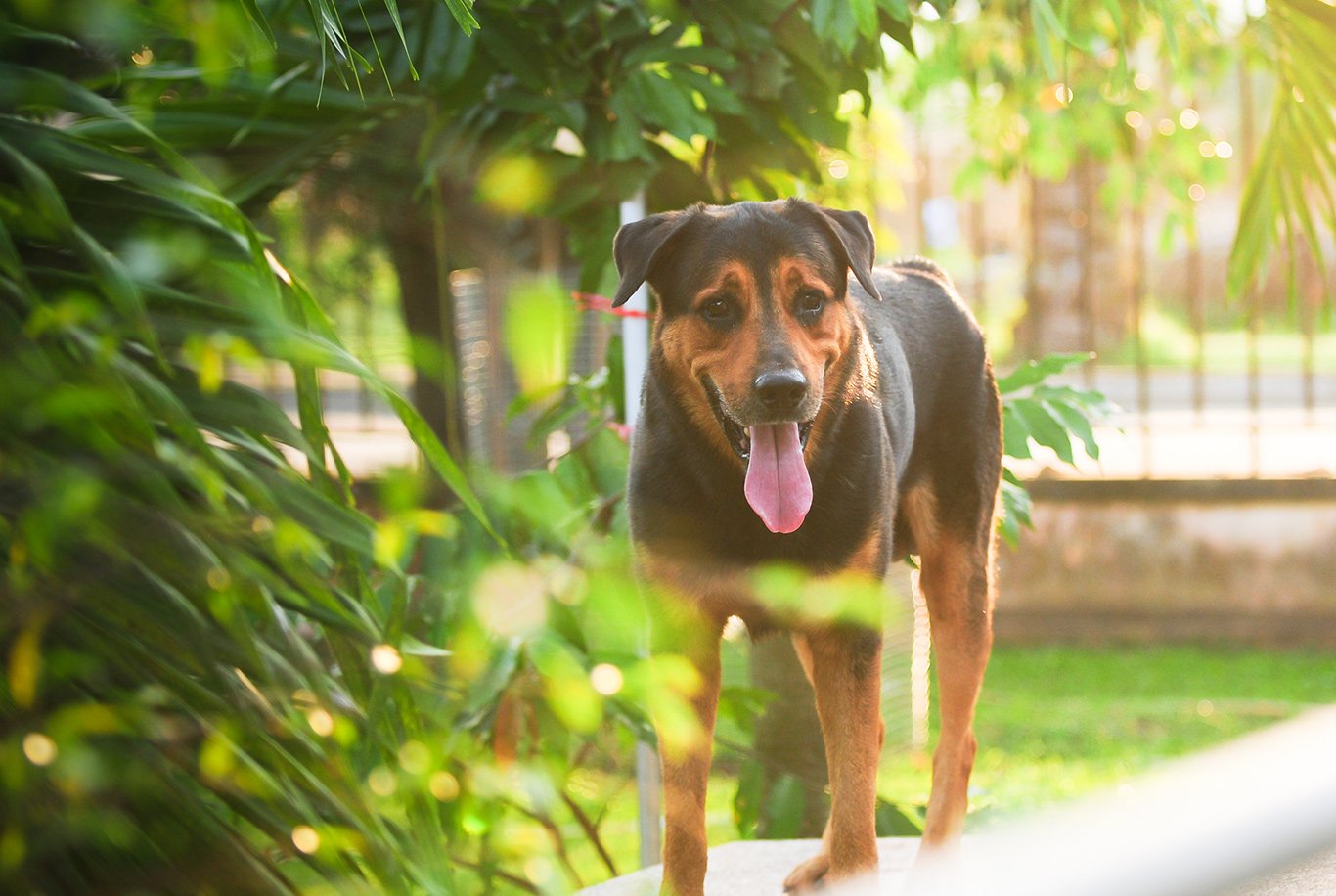
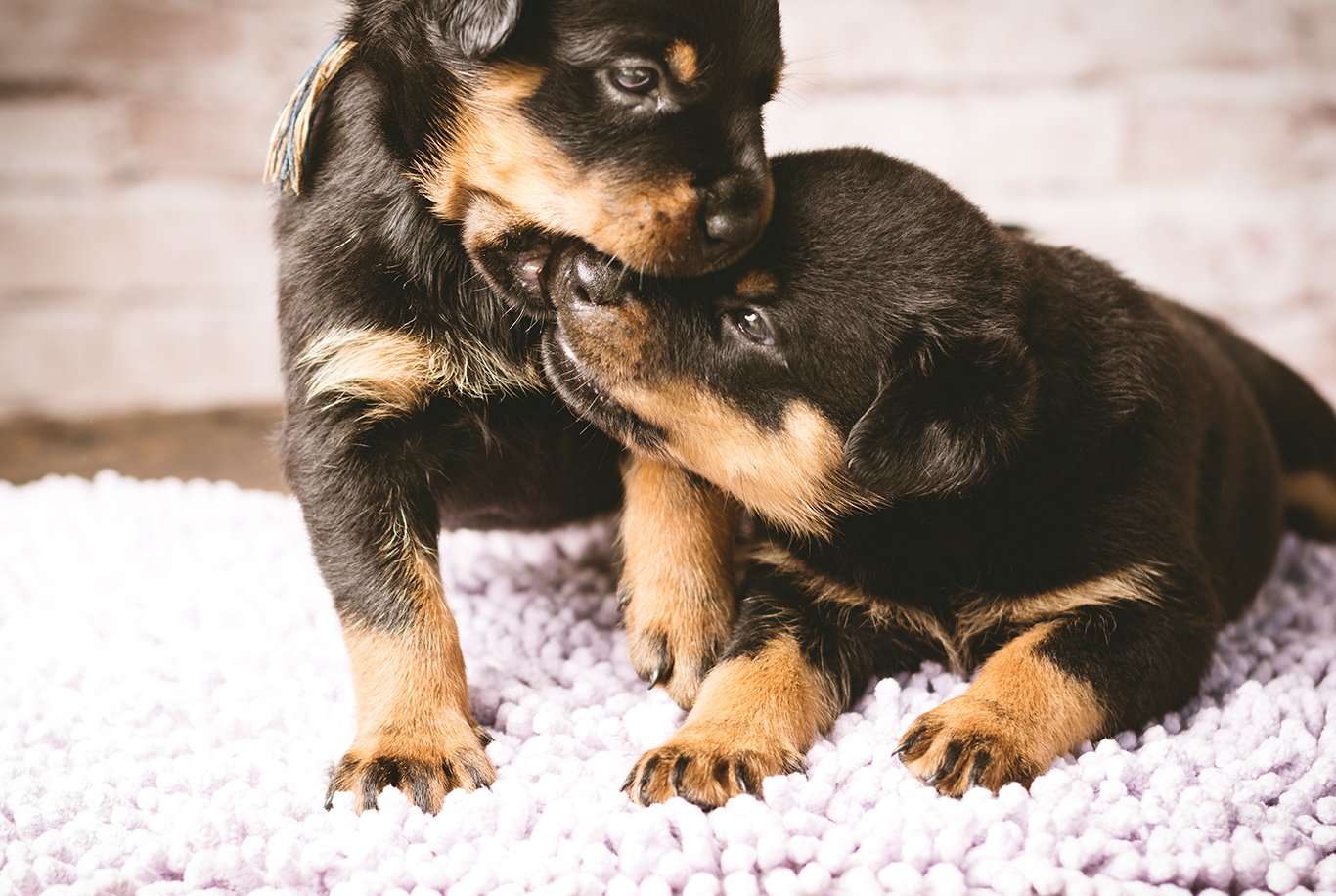
Rottweiler nutrition
Rottweilers are a rather active dog breed, so they do require a significant amount of physical activity throughout the day. Large breeds of dogs tend to experience problems with joints and bones more often than smaller dogs, that’s why a good formula for large dog breeds should have added glucosamine and chondroitin that can help support the osteoarticular system. Optimal Giant is a formula explicitly crafted to satisfy the needs of large and giant dog breeds. Rottweiler’s particular body shape makes them more prone to gastric volvulus - with slow feeding bowl you can decrease the chances of it happening. Dry food for large and giant dog breeds are also made with stronger jaws in mind - the bigger size of kibble additionally help with mechanical cleaning of the teeth.
Detailed description of Rottweiler
Rottweiler is quite a demanding dog breed that requires a calm yet assertive owner. These dogs like to dominate, so you can never allow them to take control.
Genesis
It is believed that the history of Rottweiler is strongly connected with the Romans. The ancestors of modern-day Rottweilers were guarding Roman camps and were commonly used as herding dogs. Many times throughout the history dogs of this breed were used sledge dogs to transport provisions and ammunition. Medieval butchers also found these dogs very useful - these strong canines were pulling heavy carts full of meat and used to guard the homes of their masters. Throughout the years, the appearance of Rottweiler changed and the dogs became more muscular.
Appearance
The massive and muscular body of a Rottweiler is very proportionate. These dogs are stocky, with deep ribcages and muscular backs. Rottweilers have strong paws and legs. Dogs of this breed have a big head with a slightly rounded forehead and wide muzzle and gently arched neck. Ears are wide-set and sitting high on the head, dangling loosely at the side of the head. Rottweilers have almond-shaped eyes, usually dark brown. Their coat is medium length, quite rough to the touch. Dogs of this breed can be most commonly seen with burnt black coat colour.
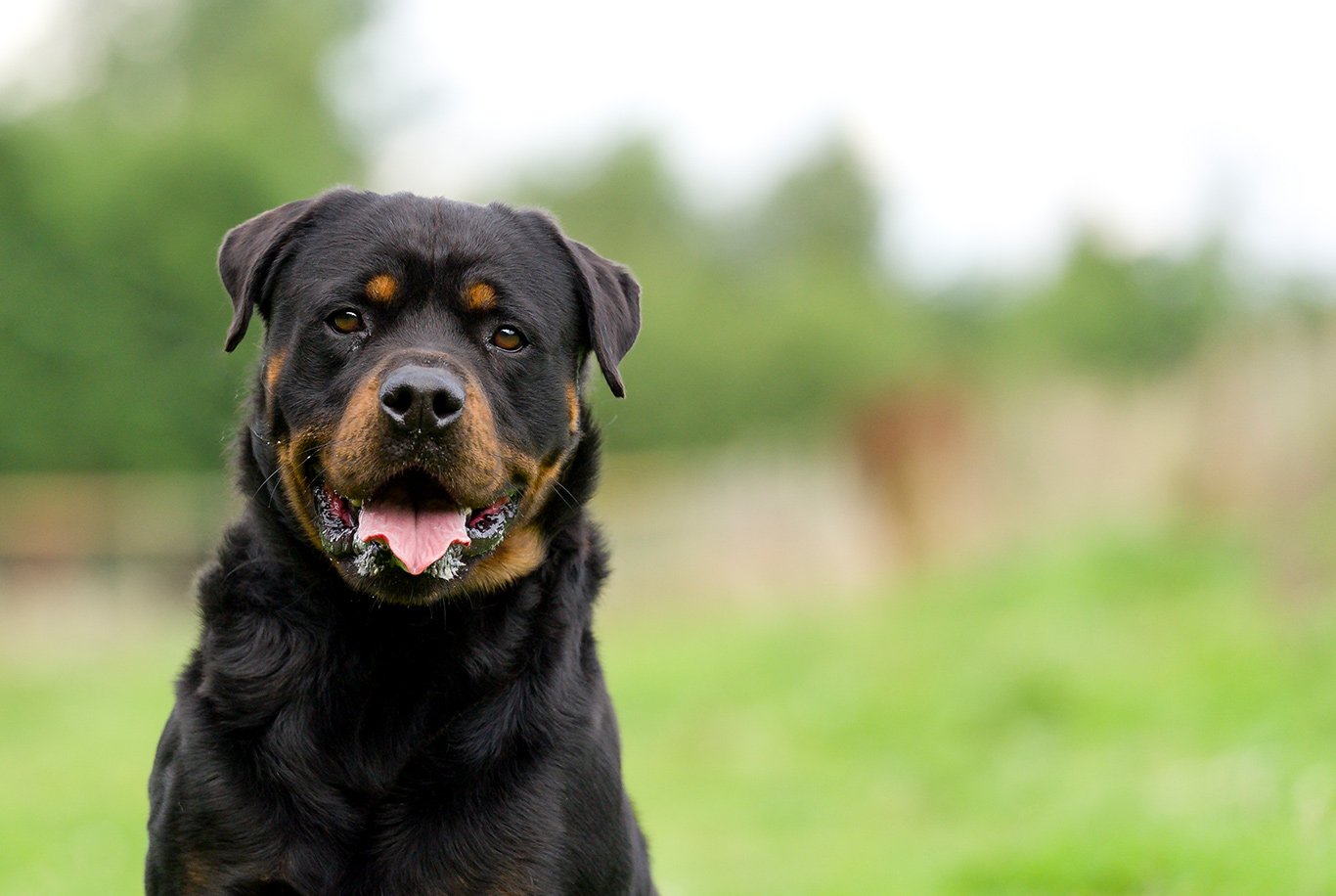
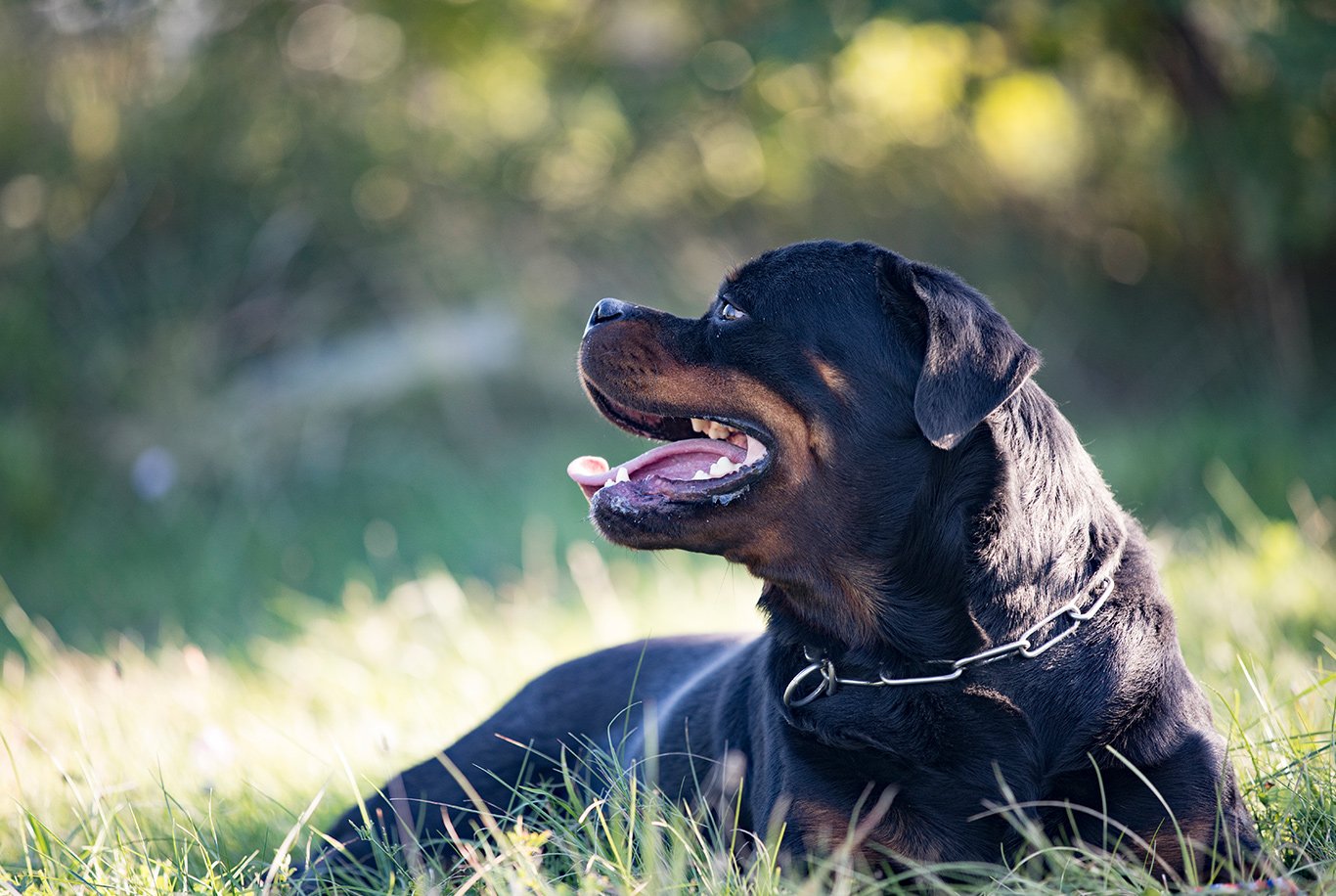
Behaviour
Although Rottweilers are recognised as stubborn, dominant and aggressive towards strangers, they make for a very loyal dog that can get particularly attached to one person. It’s a breed of dogs that don’t enjoy sitting around for too long and will gladly take part in any form of activity, both physical and intellectual. Bored rottweilers with too much energy can become unpredictable, so make sure you always spend some time playing or running around with your dog. Rottweilers can get a bit aggressive with strangers, but are very loyal and attached to their owners. Rottweilers can get very possessive with their toys - they will give it back if the owner asks for it, but it’s hard to predict how this dog can react if a stranger would try to take his toy.
Requirements
As a breed with a tendency to dominate, rottweilers do require thorough training and consistency. Rottweilers need a solid amount of physical activity - this breed will enjoy long walks, hiking or running and almost any form of physical activity you can think of.
Daily care
Rough and slick coat of a rottweiler does not require special care, so you can easily brush it once a week. During shedding season you can brush your dog more frequently, which will reduce the number of dead hairs you will find around the house. Check your dog’s ears and paws regularly and after long walks apply a balm to your dog’s paws.
Dr Anna Plummer
Vet and blogger



